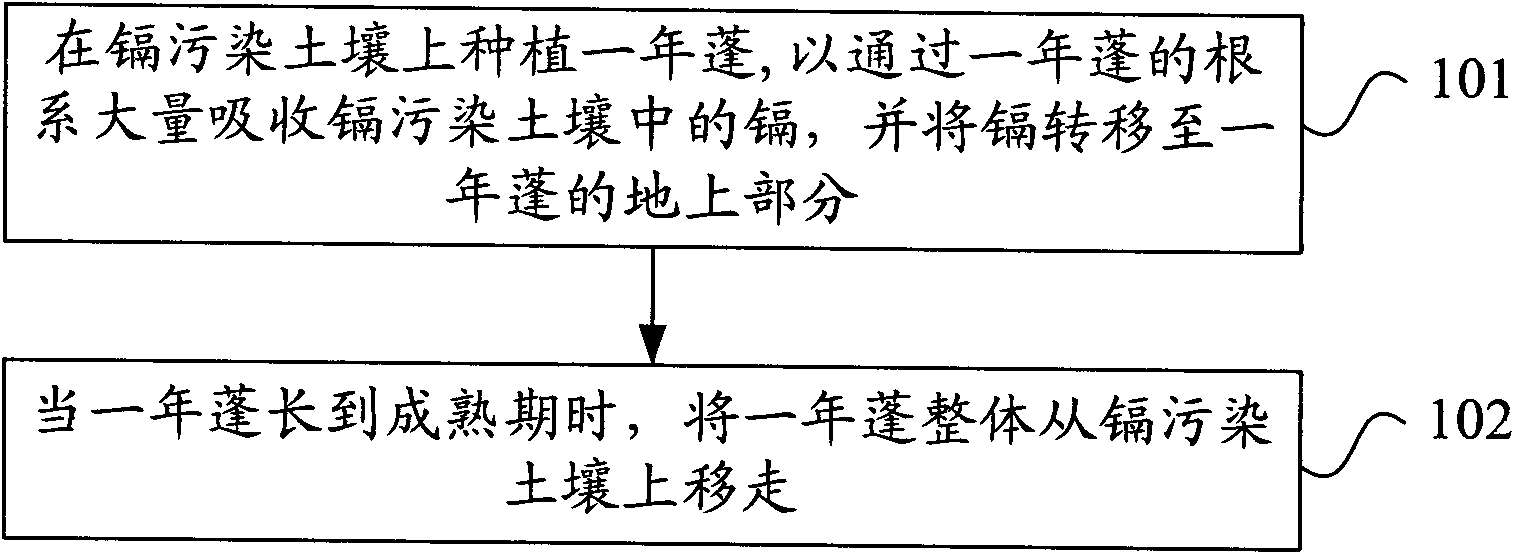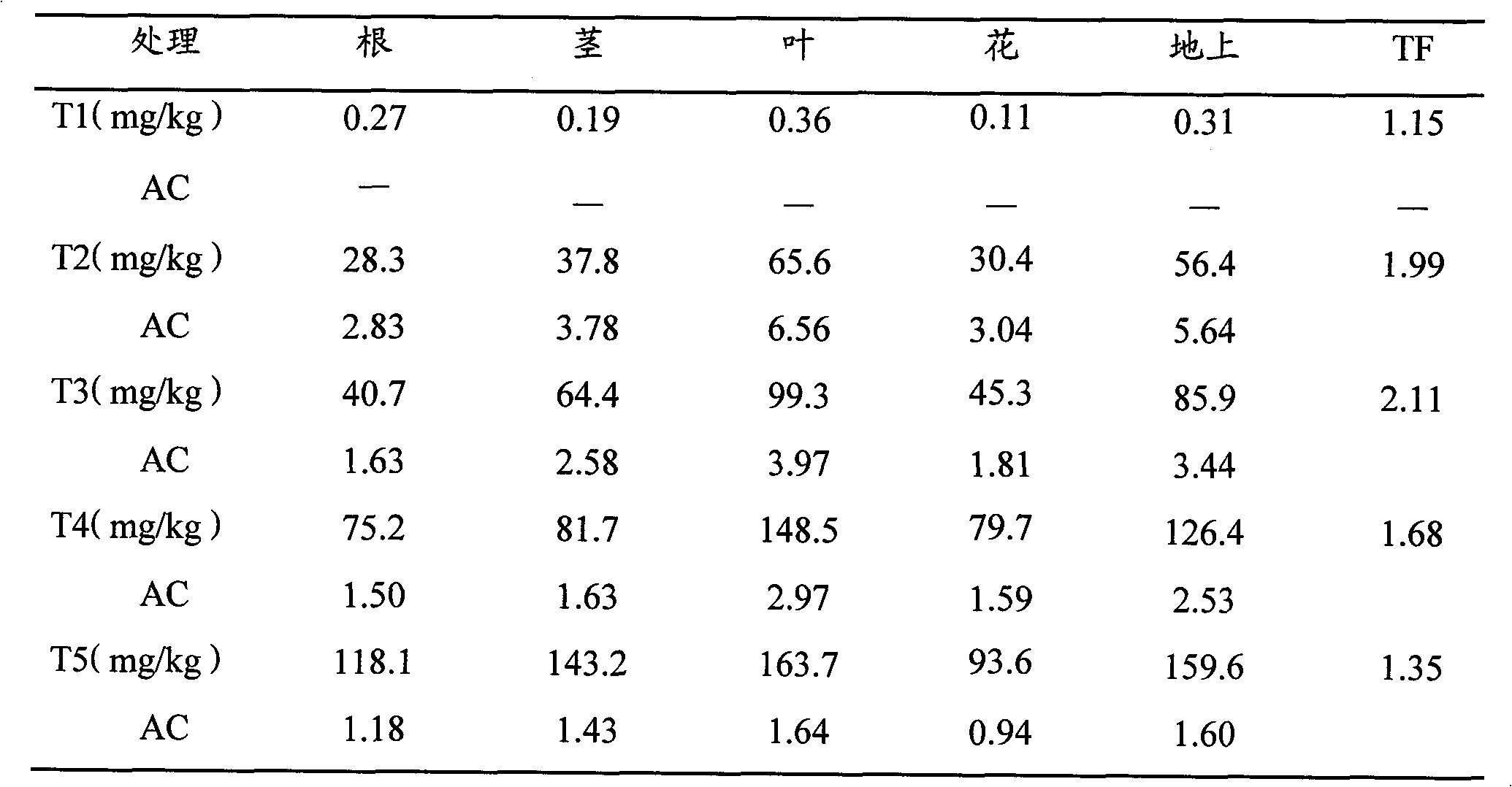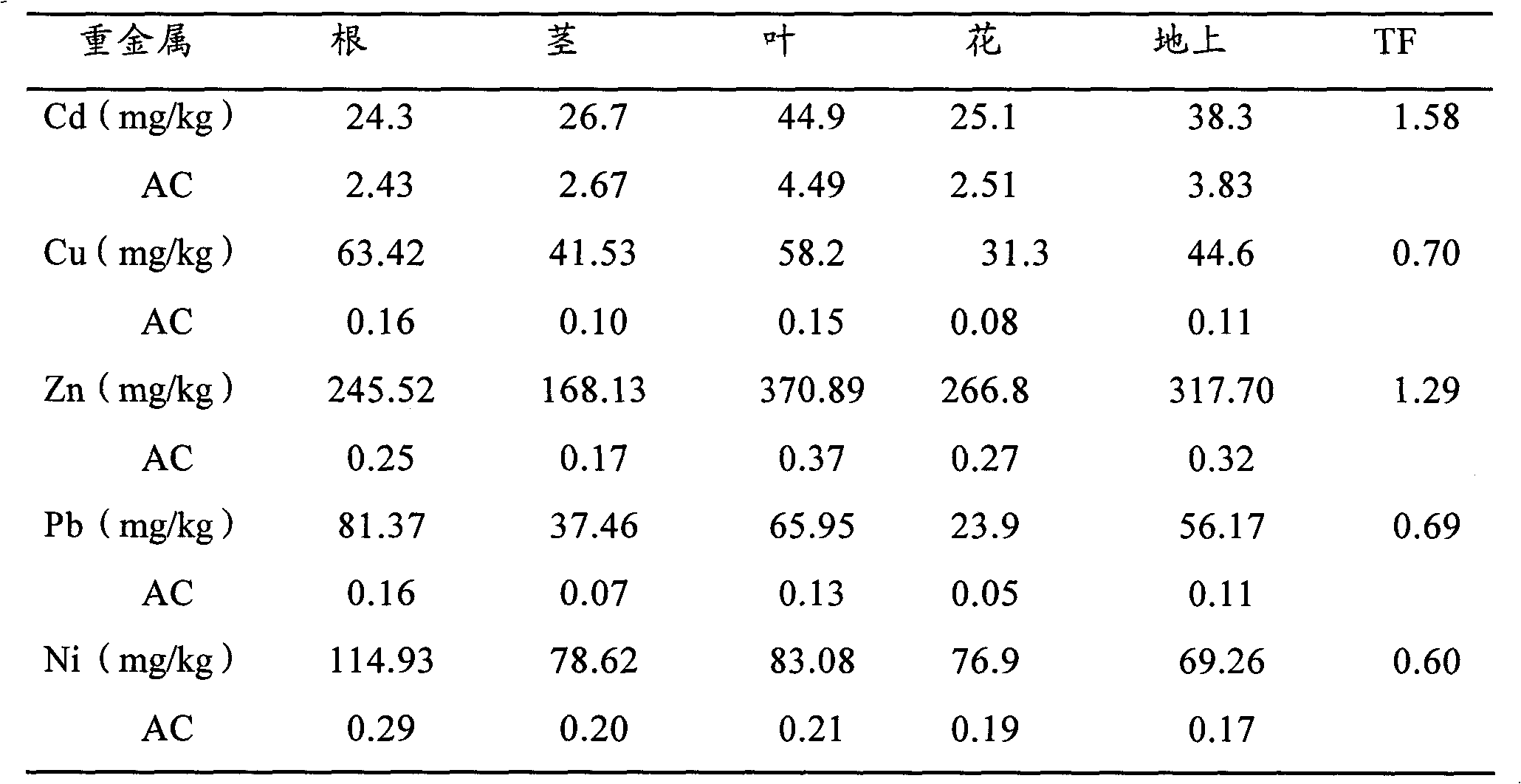Method for repairing cadmium polluted soil by compositae plants
A technology for cadmium-contaminated soil and Compositae plants is applied in the field of remediation of cadmium-contaminated soil by using Compositae plants, which can solve the problems of soil structure damage, large amount of engineering, secondary pollution, etc., and achieves stable polluted soil, little environmental disturbance, and no environmental disturbance. The effect of secondary pollution
- Summary
- Abstract
- Description
- Claims
- Application Information
AI Technical Summary
Problems solved by technology
Method used
Image
Examples
experiment example 1
[0033] Experimental example 1: Remediation of single cadmium-contaminated soil by using annual canopy
[0034] A preliminary systematic study was carried out on the cadmium accumulation ability of the one-year canopy by using the method of pot plant simulation experiment.
[0035] The soil samples were collected from the cultivated layer (0-20cm) of normal farmland in Huainan City. The soil type is yellow brown soil, which is not polluted by heavy metals (Cd content is 0.085mg / kg). The soil used for the experiment was naturally air-dried, crushed, and impurities were removed, passed through a 2mm sieve, and put into a plastic pot (20cm (diameter)×15cm (height)). Analytical pure CdCl 2 2.5H 2 O was added to the soil in solid form, and the concentrations of cadmium were 0, 10, 25, 50, and 100 mg / kg (based on the weight of dried soil). Mix well after adding, and adjust the soil water content to keep it at about 70-80% of the field water holding capacity. After balancing for t...
experiment example 2
[0042] Experimental example 2: Remediation of complex cadmium-contaminated soil by using annual canopy
[0043] Soil samples were collected from the cultivated layer (0-20 cm) of normal farmland in Huainan City. The soil was yellow-brown soil and was not polluted by heavy metals such as cadmium, copper, zinc, lead, and nickel (the content of Cd was 0.085 mg / kg, and the content of Cu was 27.57mg / kg, Zn content is 89.15mg / kg, Pb content is 22.21mg / kg, Ni content is 26.67mg / kg). The soil used for the experiment was naturally air-dried, crushed, and impurities were removed, passed through a 2mm sieve, and put into a plastic pot (20cm (diameter)×15cm (height)). Analytical pure CdCl 2 2.5H 2 O, CuSO 4 ·5H 2 O, ZnSO 4 ·7H 2 O, NiSO 4 ·6H 2 O was added to the soil in solid form, and the concentrations of Cd, Cu, Zn, Pb, and Ni in the combined pollution treatment were 10, 400, 1000, 500, and 400 mg / kg (based on the weight of dried soil), equivalent to 10, 1, 2, 1, and 2 times ...
PUM
 Login to View More
Login to View More Abstract
Description
Claims
Application Information
 Login to View More
Login to View More - R&D
- Intellectual Property
- Life Sciences
- Materials
- Tech Scout
- Unparalleled Data Quality
- Higher Quality Content
- 60% Fewer Hallucinations
Browse by: Latest US Patents, China's latest patents, Technical Efficacy Thesaurus, Application Domain, Technology Topic, Popular Technical Reports.
© 2025 PatSnap. All rights reserved.Legal|Privacy policy|Modern Slavery Act Transparency Statement|Sitemap|About US| Contact US: help@patsnap.com



